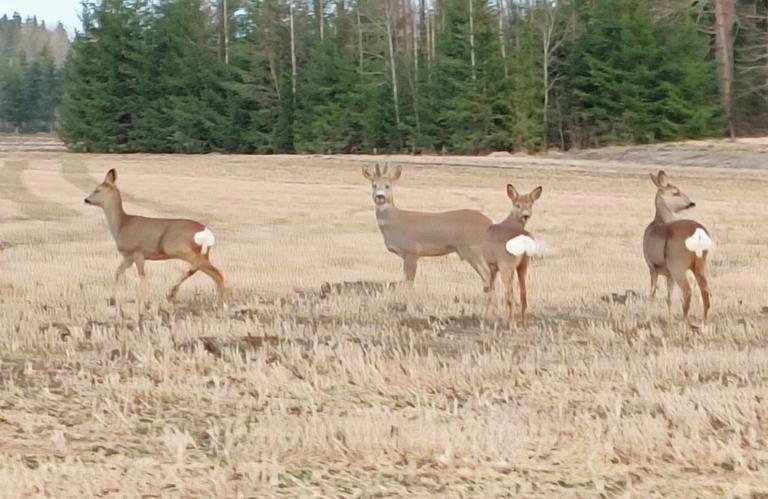
During the past hunting season, 8,523 white-tailed deer were harvested in the Satakunta region, according to the Finnish Wildlife Agency. This represents a 20% decrease compared to the previous season.
At its peak in the 2021–2022 seasons, annual deer harvests in the region reached approximately 13,500 individuals.
In the Ala-Satakunta Game Management Association area, which includes Huittinen and Keikyä in Sastamala, hunters harvested 790 white-tailed deer out of an allocated 900 permits.
"Calves accounted for 51% of the harvest (399 individuals), while 54% of the adult deer harvested were males (210 individuals)," explains Antti Impola, the regional wildlife manager.
Across Satakunta, 61% of the issued hunting permits were used. Calves made up half of the total harvest, and 57% of the adult deer harvested were males.
Impola attributes the reduction in the harvest primarily to a decrease in the deer population, which was the intended goal.
"Mild winter conditions with little snow may have had some impact, but this was a secondary factor," he notes.
White-tailed deer population density varies significantly within the Satakunta Wildlife Agency region. Since the 2020s, efforts have been made to reduce the densest populations, particularly south of the Kokemäenjoki River, with noticeable success.
Despite these efforts, local variations in population density remain. The Natural Resources Institute Finland is expected to release an updated white-tailed deer population estimate in the coming weeks.
Although wolves do contribute to reducing the white-tailed deer population, their impact is significantly less than that of hunting.
"Wolves take their share, and the more wolves there are, the more they hunt. However, hunting remains the primary means of regulating the deer population," Impola states.
The roe deer harvest in the Ala-Satakunta Game Management Association area totaled 83 individuals. In all of Satakunta, 1,914 roe deer were harvested, representing a 16% decrease compared to the previous season.
In 2022, a record-high 2,767 roe deer were harvested in the region. However, in recent years, roe deer harvests have also been declining.
In the Ala-Satakunta Game Management Association area, 52 moose were harvested, with all issued permits used. Of the harvested moose, 46% (24 individuals) were calves.
Across Satakunta, 2,425 moose were harvested, marking a 3% increase from the previous year.
According to the Finnish Wildlife Agency, the highest moose harvest density (relative to land area) was recorded in northern coastal Satakunta, as has traditionally been the case. On average, the moose harvest density in the entire Satakunta region was 2.2 moose per 1,000 hectares.
The Natural Resources Institute Finland (Luke) will soon release updated estimates on the moose population size and structure.
The Satakunta hunting region is divided into four moose management areas and is home to approximately 200 hunting clubs and groups that focus on big game.
Of the 15,000 people who purchase hunting licenses in the region, an estimated 6,000 participate in moose and deer hunts.
LUE Ala-Satakunnan rhy:n alueella sudet harventavat peurakantaa huomattavasti vähemmän kuin ihmiset

Kommentit
Kommentoi asiallisesti
Kirjoita kommenttisi selkeästi ja napakasti. Loukkaavia, henkilöön meneviä tai vihamielisiä kommentteja emme julkaise. Toimitus lukee kommentit ennen julkaisua ja muokkaa niitä tarvittaessa.
Rakentavasti kriittiset, asialliset kommentit ovat tervetulleita.